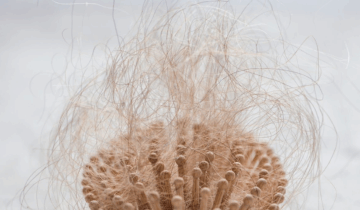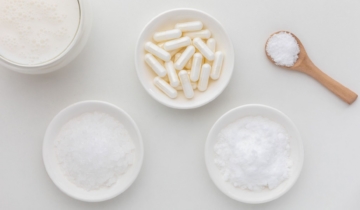I have always been BIG on recycling. I try to follow all of the rules, I have multiple reusable straws made from metal and glass, I try to use a reusable mug as much as possible, I avoid buying plastic water bottles and I separate my plastic from my paper. In theory, I actually put in a lot of effort to ensure that I am following best practices when it comes to recycling.
However, a couple of months ago, I noticed that even though my kitchen recycling was on point, I was seriously neglecting my bathroom recycling. I guess I’ve been so used to training my brain to identify garbage from recycling in the kitchen that I never really thought about how I was disposing of my skincare and beauty products. As a content creator, this was incredibly alarming because I receive A LOT of products to use and review. If I was recycling in the kitchen, why wasn’t I recycling in the bathroom as well?
And apparently, I’m not the only one. According to a survey done by Unilever, there is a HUGE recycling gap in the United States. Now of course, I live in Canada but we can’t be too far off from the following stats:
The study found that while a “majority of Americans are aware that empty bath and beauty bottles are recyclable, less than half (34%) report always bringing these items to the bin. As a result, common bathroom products like shampoo, body wash and lotion bottles could be more likely to end up in landfills than their kitchen counterparts.” – Unilever Bathroom Recycling Index
This negligence makes a huge impact, with nearly 29 million tons of plastic sent to landfills every single year, many of which are bottles and products that are found in bathrooms. While I don’t want to assume women are the culprit, I think it’s safe to say that on average, we are more likely to have 2x the amount of products that men have in the bathroom. There’s nothing wrong with that, but we just need to be better and do better at making sure that our skincare and beauty products also end up in the recycling bin.
Recycling can be tricky and there are lots of rules that you need to follow especially when it comes to plastic bottles and aluminum bottles.
There are lots of companies on the market right now that are are doing their best to minimize their carbon footprint and switch to sustainable packaging (brands like Ilia Beauty, RMS Beauty and Tata Harper), there is still more progress that needs to be made.
So while we wait for more brands to step up and consider sustainable packaging for their products, it’s up to us as consumers to put our best foot forward and help out by recycling as much as possible, this includes our bathroom products as well.
Here are some important things to remember when recycling beauty and skincare products.
Before recycling, find out exactly what products can and cannot be recycled in your area.
Every city has its own rules when it comes to what is recyclable. So it’s important that you check to see if there are any restrictions as to what you can and can’t recycle. To help you out, here is a general list of bathroom items that can be recycled:
Skin care packaging: lip balm tubes and caps, soap dispensers and tubes, body wash caps, lotion dispensers and caps.
Hair care packaging: shampoo caps, conditioner caps, hair gel tubes, and caps, hair spray triggers, and hair paste caps.
Cosmetic packaging: lipstick cases, lip gloss tubes, mascara tubes, eye shadow cases, bronzer cases, foundation packaging, powder cases, eyeliner cases, eyeliner pencils, eyeshadow tubes, concealer tubes, concealer sticks, and lip liner pencils.
Examine the labels on your products.
Always read labels! Not just to check for ingredients (although this is equally as important), a lot of labels will tell you if the product is recyclable or not. A clear sign that the product you are using is recyclable is the classic triangle with arrows (actually called a Mobius loop).
However, not every product with a Mobius loop is recyclable where you live. Most plastic products have a very similar symbol with a number inside which indicates the type of plastic that the product is made of. The numbers can go from 1 to 7. Most recyclable products have a number 1 or number 2 while a number 3 means that the product is made with problematic materials to recycle. These products usually belong in the garbage. Numbers 4 to 7 depend on your local community rules which is why it’s so important to read up on what you can and cannot recycle in your area.
Check for multi-material products.
Anything that is made from multiple materials is really hard to recycle. Items such as pumps and droppers on top of bottles are often multi-material (they can contain metal springs on the inside and other materials) and can raise a red flag. In this case, it’s important to remove pumps from all bottles before recycling.
When in doubt, throw it in the trash.
I know this sounds horrible to say (or I guess, to read?) but if something is not accepted at a recycling facility, it can actually clog up the entire system which can cause serious problems.
Municipal recycling facilities actually sell materials to countries like China which do the actual recycling but when non recyclable or contaminated products get mixed in, the materials are actually harder to sell.
How to Recycle Specific Products:
AEROSOLS
Yes, you CAN actually recycle aerosol cans just make sure to check that the collection service in your area accepts them. Most aerosol products are either made from tin plated steel or aluminium which are both completely recyclable, however, it’s important to make sure that the bottle is completely empty.
GLASS
As you probably already know, glass is also recyclable. Just make sure that you are giving each product a good rinse before sending it off to the recycling bin since skincare formulas can contaminate the rest of your recyclables. The only exception to this rule are nail polish bottles which, unfortunately, cannot be recycled.
PLASTIC TUBES AND BOTTLES
The most commonly found products in our bathrooms are made from plastic, such as skincare tubes and shampoo bottles which is why it’s SO important to ensure that these products are properly recycled.
For best practices, make sure to leave the labels on so that the recycling team can identify what the bottle was full of in order for them to properly sort through each item. And don’t forget to make sure that each bottle is clean before tossing it in the bin.
HAIR TOOLS
Recycling electrical items can be done in either two ways: first, make sure to check to see if the product that you are recycling still works. If so, you can donate it to a local charity shop or salvation army. If the product no longer works, it can be recycled however you’ll have to take it to a specific centre (this will depend on your city).
COTTON PADS
Items such as cotton pads and cardboard stemmed q-tips are not accepted in your recycling but can be composted with your kitchen waste.
MAKEUP PRODUCTS
Most often, small items such as lipstick tubes, eyeshadow pots, and mascara wands can’t be recycled. This is because small-format containers will get screened out or caught in the disposal stream for that facility. These small items can get missed by sorting machines and will end up in a landfill. However, you can check to see if the brand has its own recycling program. A great example of this is MAC cosmetics where you can actually bring in your lipstick tubes in store for them to recycle for you. In exchange for six tubes, you’ll even be rewarded with one free lipstick of your choice. It pays to recycle!





 No products in the cart.
No products in the cart.